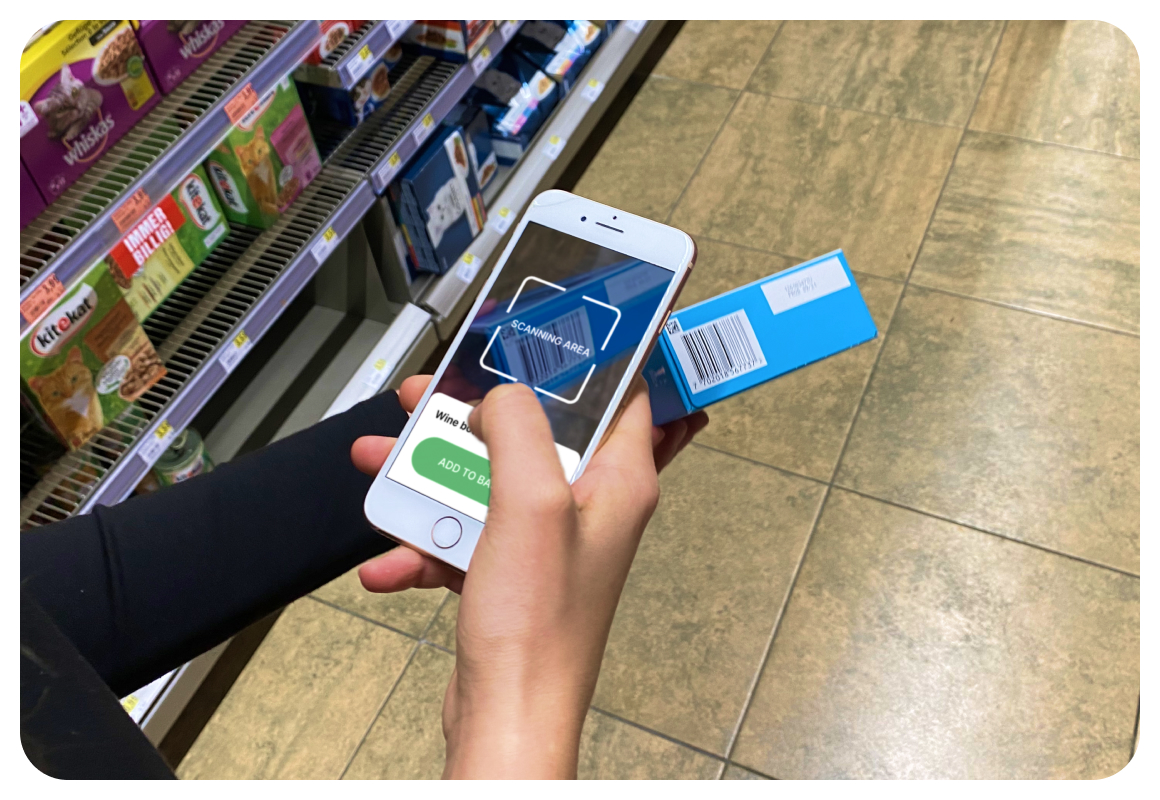Depending on whose word you listen to, it doesn’t seem to be long before automated checkout can be found everywhere. According to Retail Wire* 90% of shoppers living close to an Amazon Go or a similar cashierless store in their neighborhood have either had an excellent or good shopping experience. Also IGD SupplyChain Analysis** highlighted the trend that stores will have digital solutions integrated in every part of the customer journey in order to provide a seamless shopping experience.
But what are the advantages and disadvantages when considering some of those many different automated checkout concepts?
Safe and contactless shopping
The pandemic has kept shoppers at home, and public health awareness has motivated shoppers to keep their errands short and mostly always obeying social distancing rules. Security and keeping employees and shoppers safe has become of utmost importance to many retailers. Autonomous checkout formats as well as self-checkouts are seeing a higher adoption rate as they assist in providing a contactless and hygienic shopping experience. Moreover, store associates do not need to interact personally with customers in every transaction — they can focus on assistance and help where it is needed.
Strict compliance to GDPR
Some shoppers raise concerns about data protection and the use and storage of their personal data. And also retailers, especially in Europe, need to be very careful about collecting image data (i.e. mainly videos). Therefore retailers need to make sure that the technology they deploy is not prone to data leaks, misuse or any other harm to their shoppers’ privacy. That’s why their suppliers of new digital and autonomous checkout solutions need to comply with very strict GDPR regulations. Trustworthy and careful handling of data belongs to the highest priorities. For one example of how a privacy by design approach is structured, please have a look at the Checklens privacy by design approach.
Greater Shopping Experience for shoppers
Customers increasingly demand a seamless in-store experience, with less friction during the buying process in order to enable more and faster transactions. Our data has shown that an average transaction takes between three and eight minutes at the traditional till and ninety seconds at the self-service checkout. Autonomous checkout types can dramatically speed up the checkout process as items can be scanned and bagged during the shopping process.
Valuable Investment and Insights
The technology behind autonomous checkout may be a larger investment, but gained data insights will allow retailers to better understand their customers’ needs and to generate more value for them. Understanding customer behavior and their interactions with modern checkout technologies enhance their experiences. This is critical for retailers. Instapage for instance claims that 80%*** of shoppers will shop at retailers that offer a personalized experience.
Revenue driver or shrinkage perpetrator
But what about human supervision and control at the self-checkout and at autonomous cashierless stores?`Retailers and technology companies employ various security measures, including front-end audits in order to manage the increasing shrinkage numbers they are facing. But these measures do not always detect unscanned items. In a study, Adrian Beck (2018)**** found that for every additional 10% of transactions done via scan-and-go, the store’s loss can increase by an additional 1% (study — more than 140 million scan-and-go transactions at 13 major retailers in the US and UK).
So does this mean self-checkout technologies are doomed to fail?
Help comes from an unexpected side: AI technologies are about to become our dearest shopping buddy in the future. With the use of AI technology, retailers are more likely to adjust their business models and generate more accurate processes accordingly. AI, especially Computer Vision, can assist store operators with simple supervision tasks in order to check whether every product that leaves the store has been paid. At the same time, store associates are relieved from irritating supervision tasks and can focus on value-creating assistance to their shoppers.
Checklens is one of the world’s first and foremost Computer Vision technology companies: We retailers to detect and analyze shrinkage at the checkout or on the sales floor. With a solid database, the success of AI-empowered can easily be measured and the return-on-investment calculation leads to a clear decision basis. Checklens is designed in a way that our products can use the existing infrastructure (checkouts, cameras, servers, etc.) as far as possible by just upgrading a store. In this way, investment costs can be kept low and the business case for the store operator can be clearly defined. Get in touch with us today.
Sources:
* Tom Ryan. 2021. Automated checkout ‘will be everywhere’ sooner rather than later. https://www.retailwire.com/discussion/automated-checkout-will-be-everywhere-sooner-rather-than-later/
** Retail Analysis from IGD. 2021. Store of the Future 2030. Nick Miles.
*** Ted Vrountas. 2019. 68 Personalization Statistics Every Digital Advertiser Must Keep in Mind. https://instapage.com/blog/personalization-statistics
**** ECR. Beck, Adrian. Self-checkout in Retail: Measuring the Loss. 2018.




